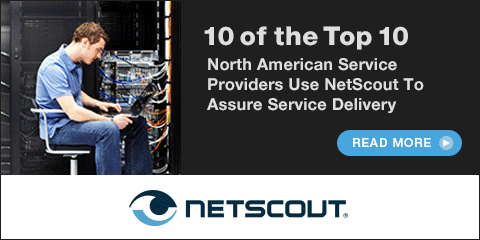Mining Network Gold
By: Jesse Cryderman

There are several directives that drive operations when you’re a communications service provider (CSP): ensure that services work properly and are charged and billed appropriately, deliver an optimal customer experience, and identify and exploit new revenue opportunities. Of course, there are many more wheels in motion, but those three imperatives percolate through most decisions. It may sound clichéd, because it is, but knowledge is power — and clear visibility into the inner workings of these key operational areas is tantamount to success.
Basic reporting has always been part of the telecommunications business, and it isn’t going away anytime soon, but like Elven kings peering into a glass orb in a Tolkien novel, the desire for better insight and prognostication is never-ending. CSPs want to know exactly what’s happening in their networks in real time, how services are being consumed, which devices function best, and which problems can be avoided. They also want to understand what their services look like from their customers’ perspective so they can improve loyalty, lower churn, effectively market their offerings, and increase average revenue per user (ARPU). And in order for CSPs to evolve and grow their businesses, they want answers to strategic questions like “Which new services are primed for monetization, and among which groups of subscribers?”
The solution? “Big Data” is a buzzword these days, and it refers to the capture and contextualization of data from billions of events and sources into something meaningful. Big Data promises to turn mountains — no, planets — of ones and zeros into pie graphs, flow charts and dashboards that succinctly display key metrics. Ask any question of your network, services, customer base, or business strategy and Big Data promises to have the answer. It is the proverbial crystal ball, and may be just as figurative.
The problem is that everyone seems to be going Big Data crazy all of a sudden. But such is the nature of steamy trends. Despite all the talk surrounding convergence and the demolition of silos, many CSPs have in fact purchased separate Big Data solutions to address the three concerns of service assurance, customer experience management (CEM) and business intelligence (BI), which seems counterintuitive, as nearly all the data measured by these discrete systems comes from a single source: the network. The myopic focus on Big Data trees is, in some cases, blurring CSPs’ ability to see the forest. Again, such is the nature of steamy trends.
Turning network data into business intelligence
One way CSPs can avoid the Big Data logjam is by loosening their grip on the catchphrase and embracing an older one: think outside the box and you’ll discover that the best place to get the data required to make decisions that impact the growth of the telecommunications business is the network itself — not billing data, not postevent analysis, not ad hoc reporting, but real-time knowledge of everything that flows across your network.





















